Squishy Science Experiment With Warblettes
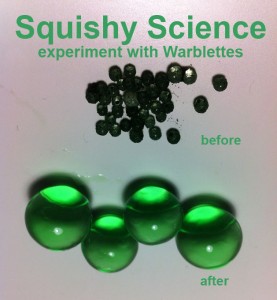
NOTE: Warblettes are a polymer that absorb water. Like crayons, Warblettes are nontoxic but not meant for eating.
The Experiment
Observe the Warblettes before you put them in water. How do they feel? Measure the diameter: how small are they? (Warning: if you use colored Warblettes, you’re likely to get some food coloring on your fingers.) Use these printable lab sheets to make observations.
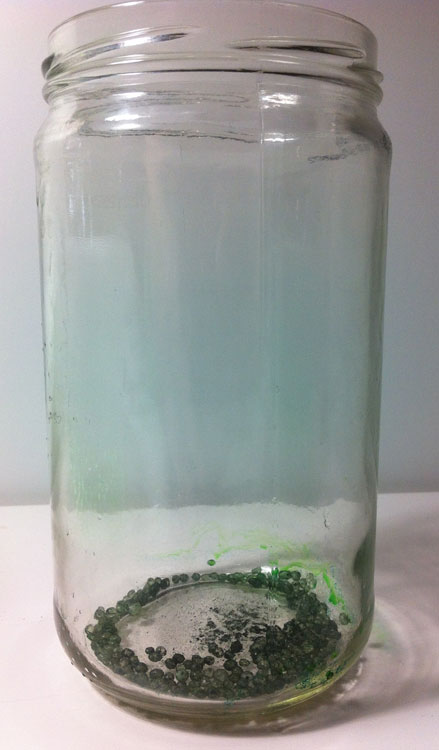
Put 1 teaspoon of Warblettes in 2 cups of water. What happens? (Colored Warblettes will color the water. The Warblettes instantly begin absorbing water.)
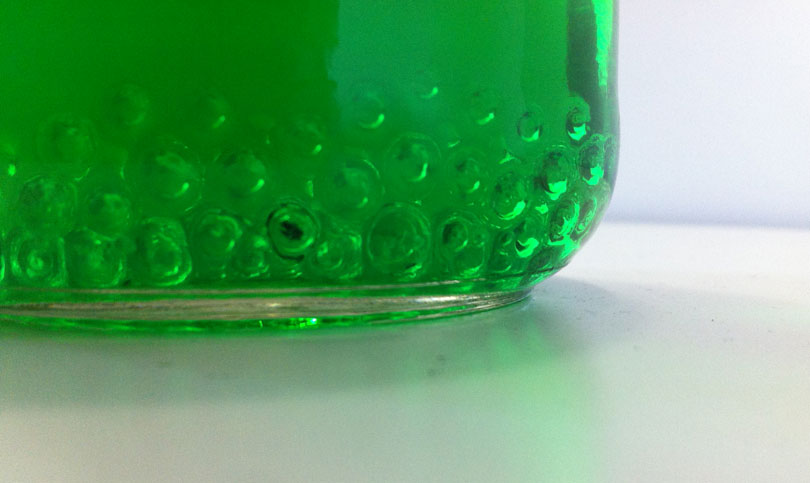
After 4-6 hours, the Warblettes will have absorbed the maximum amount of water. What observations can you make now?
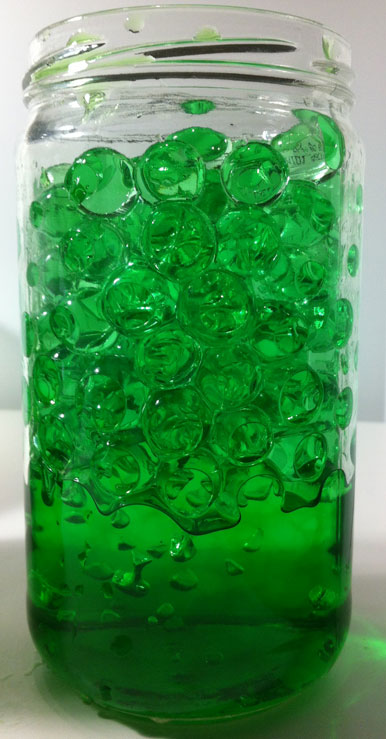
Expanding the Experiment
If you find your kids love Warblettes and want to learn more, try:
- Observing the effects of dehydration: do they shrink to the original size? How long does it take to shrink in the sun? In the shade? Does spreading them out affect the dehydration rate?
- Testing the effects of cold and hot water on absorption.
- Graphing the diameter of Warblettes as they grow (measure every 15 minutes or so).
- Putting Warblettes in various household liquids, like soap or salt water, to see if they will grow.
- The Warblette Activity Book has even more experiments covering polymers, light refraction, kinetic energy, and more.
Adapting for Younger Children
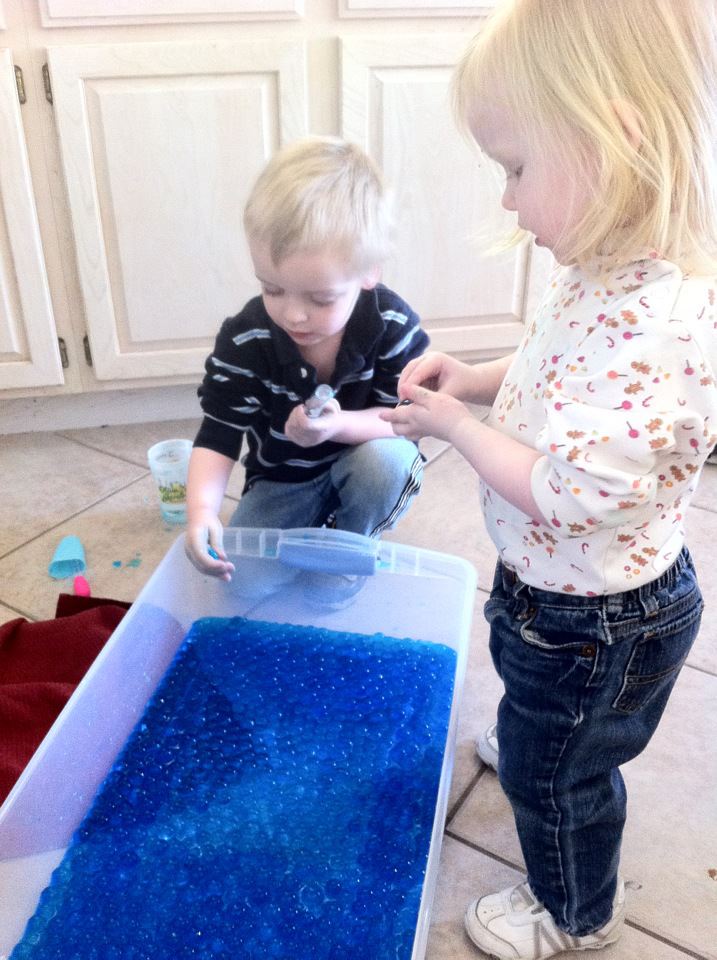
This lab is geared toward elementary-aged students, but others will enjoy learning, too. A sensory bin with Warblettes would be a great way for the youngest group to explore. My toddler (2) and preschooler (4) love playing with and squishing Warblettes. Show your young scientists the Warblettes before and after water absorption. Encourage them to draw pictures of what they see on the observation page of the printable lab sheets.
_______________________________
Alicia Brown is a homeschooling mom who writes for Heath Scientific, which was founded by a science teacher dedicated to the idea that “A child looks at life with his hands.” Heath Scientific strives to provide scientific toys and supplies that encourage hands-on learning.


